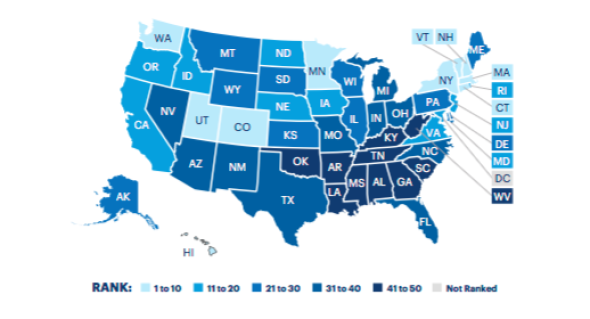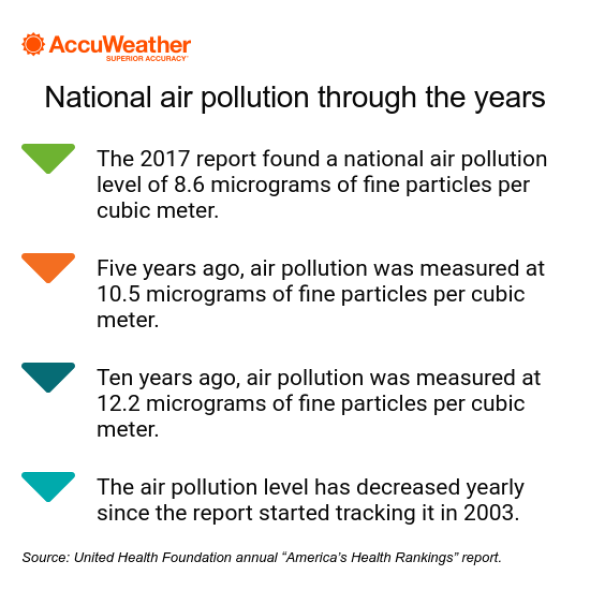Which US states are the healthiest to live in?
For the first time, Massachusetts was ranked the healthiest state in the United States on the United Health Foundation's 2017 annual report, "America's Health Rankings", which was released in December 2017.
The report is based on 35 core measures across four categories: behaviors, community and environment, policy and clinical care.
Hawaii has held the top spot as the nation's healthiest state for the past five years, but it fell second to Massachusetts in the 2017 report.
Massachusetts has steadily progressed from the 11th spot in 1990 to number four in 2012. It has the lowest percentage of uninsured residents as well as a low prevalence of obesity.

The United Health Foundation ranked the states from most to least healthy for 2017. (Map/United Health Foundation)
One major factor in the report is the amount of air pollution in a state. Measured as the average exposure of the general public to particulate matter of 2.5 microns or less, air pollution is linked to poor lung function, asthma, chronic bronchitis, irregular heartbeats and heart attacks.
According the report, combustion emissions cause an estimated 200,000 annual premature deaths.
In the past five years, the national level of air pollution has decreased 18 percent from 10.5 to 8.6 micrograms of fine particles per cubic meter. Though the level in California remains the highest of all states, it has seen the largest decrease since 2012.
In the 2017 report, Wyoming ranked as the least polluted state. Meanwhile, Alaska, Nevada and Arizona have all seen increases in the level of air pollution.

The report found that the number of mental health providers in a state, a new measure added to the 2017 report, varies widely by state.
With 547.3 mental health providers per 100,000 residents, Massachusetts has the highest concentration in the country.
Though it was ranked the healthiest state, Massachusetts has experienced a large increase in the drug death rate since 2012.
At the other end of the spectrum, Mississippi was named the least healthy state for the second year in a row.
Mississippi experienced major health challenges including a high prevalence of smoking, obesity and children in poverty. Mississippi has fewer than 45 dentists per 100,000 residents.
The 28th annual report listed the rise of premature death as one of the primary health concerns facing the nation.
The premature death rate, defined as the number of years of potential life lost before age 75, increased for the third straight year. The premature death rate declined by 20 percent from 1990 to 2015, but has risen 3 percent since 2015.
Deaths due to drug injury are also a significant challenge against health in the nation. From 2016 to 2017, the number of deaths due to injury increased 7 percent. The increase continued the upward trend with drug deaths up 60 percent since 2007.
The drug death rate has many disparities across the population. The rate in males is 18.7 deaths per 100,000 residents, where in females its 11.3 deaths per 100,000 residents.
The rate of drug deaths is significantly higher among whites than the rate among blacks, Hispanics, Asian/Pacific Islanders and American Indian/Alaska Natives.
The cardiovascular death rate also increased for the second consecutive year.
The number of deaths due to all causes of cardiovascular disease, including heart disease and stroke per 100,000 residents, continuously decreased for the first 25 years of the report.
The report states that infant mortality and low birthweight are the main long-term challenges facing the nation. The prevalence of low birthweight decreases with educational attainment.
With the data and insights found in the report, the authors aim to improve public health by stimulating action and providing benchmarks for states.
